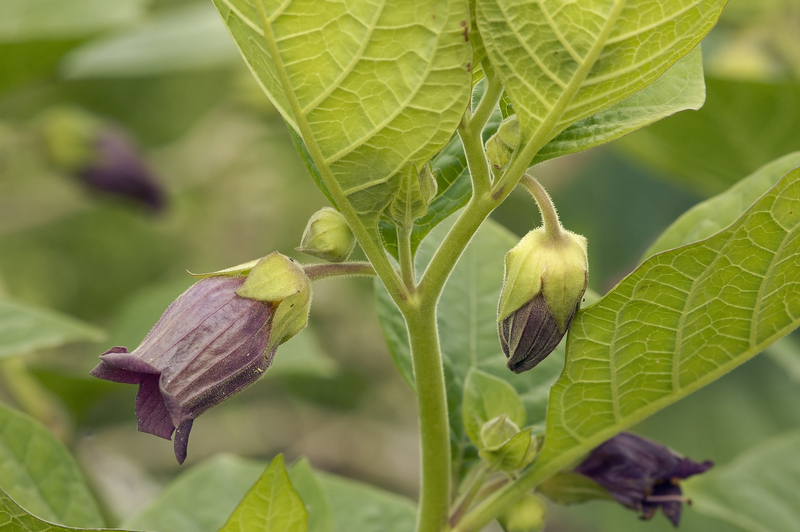Mastering the Skill of Growing a Cozy Herb Garden
Posted on 17/08/2025
Mastering the Skill of Growing a Cozy Herb Garden: Your Ultimate Guide
Ever dreamed of stepping into your kitchen and plucking fresh, fragrant herbs to elevate your culinary masterpieces? Mastering the art of growing a cozy herb garden is within your reach, even if you are new to gardening! In this comprehensive guide, you'll discover how to cultivate a lush, thriving, and inviting herb garden--whether you have a spacious backyard or a sunlit windowsill.

Why You Should Start a Cozy Herb Garden
Herb gardens offer beauty, flavor, and health benefits right at your fingertips. Here's why so many gardeners are enticed to master the skill of nurturing their own herb haven:
- Fresh Flavors: There's nothing like adding just-cut basil or mint to your favorite recipes!
- Saves Money: Growing your own herbs means fewer trips to the store and no wilted bundles wasted.
- Therapeutic Benefits: Tending to your cozy garden is relaxing and can boost your well-being.
- Green Decor: Herbs bring lush greenery and pleasant aromas into any space, indoors or out.
- Sustainable Living: Home-grown herbs reduce your carbon footprint and inspire eco-friendly habits.
Choosing the Right Location for Your Herb Garden Sanctuary
Before you dig in, you have to choose the perfect spot for your cozy herb retreat. Herbs thrive in sunlight, so select a location that receives at least 6-8 hours of direct light each day.
Indoor Herb Gardens
If outdoor space is limited, windowsills and balconies make excellent gardens. Opt for south- or west-facing windows for maximum sunlight. LED grow lights are a smart solution for rooms with low natural light.
Outdoor Herb Gardens
Have a backyard or patio? Choose a spot with rich, well-draining soil. Raised beds, containers, or traditional garden plots all serve as wonderful homes for your herbs.
Planning Your Perfect Cozy Herb Garden
Planning is essential to mastering the skill of growing herbs. Consider these key factors:
- Space: How much room do you have? A small kitchen corner or a sunny yard?
- Light: Ensure your chosen area has the necessary sunlight.
- Water Access: Easy watering is vital for healthy herbs.
- Climate: Some herbs are more tolerant of temperature changes than others.
Designing a Cozy Ambiance
A cozy atmosphere inspires creativity and relaxation. Use decorative pots, rustic wooden crates, or inventive planters to give your indoor or outdoor garden a unique character. You can also incorporate soft lighting and fragrant varieties to enhance the mood.
Selecting the Best Herbs to Grow
Some herbs are especially forgiving for beginners and perfect for cozy culinary adventures. Here are the top picks:
- Basil: Adds robust flavor to Italian dishes and grows quickly.
- Mint: Ideal for teas and desserts; best kept in containers to prevent spreading.
- Rosemary: Aromatic and hardy; perfect for roasted dishes and breads.
- Thyme: Tolerates drought and delivers savory undertones to many dishes.
- Chives: Mild onion flavor and attractive purple flowers.
- Parsley: Versatile garnish and nutritional powerhouse.
- Cilantro: Essential for salsas, curries, and Asian cuisine.
Other Herb Varieties to Consider
For those feeling adventurous, try cultivating oregano, dill, sage, tarragon, lavender, or lemon balm. Expanding your selection is a wonderful way to fully master the craft of herb gardening.
Soil, Containers, and Garden Beds: Creating the Ideal Environment
- Soil: Choose a high-quality, well-draining potting mix. Herbs dislike soggy roots!
- Containers: Use pots with drainage holes. Terracotta, ceramic, wooden, or recycled containers can all be customized to suit your garden's style.
- Garden Beds: Raised beds or traditional plots should be prepped with organic compost and loosened soil to ensure proper root growth.
Tip: Group herbs with similar water and sunlight needs together. Mediterranean herbs (like rosemary, oregano, thyme, sage) thrive in drier, sunnier conditions, while basil, parsley, and mint prefer a bit more moisture.
Planting: The First Steps in Your Cozy Herb Garden Journey
Starting from Seed vs. Buying Seedlings
Both methods have merits. Seeds are cost-effective and offer a wider variety. However, starter plants from a nursery provide instant gratification and a head start, especially for beginners.
- Sow seeds: Follow packet instructions. Most need warmth and moisture to sprout. Indoors, use seed trays or small pots; outdoors, sow directly once frost danger has passed.
- Plant seedlings: Transplant carefully, keeping the root ball intact. Water thoroughly after planting.
Proper Spacing and Companion Planting
Herbs need room to breathe. Overcrowding invites diseases and pests, so check spacing recommendations based on each variety. A good rule of thumb: space small herbs (like chives and thyme) 6-8 inches apart, and larger types (like basil and rosemary) 12-18 inches apart.
Companion planting boosts plant health. For example, basil grows well with tomatoes, while rosemary deters certain garden pests!
Caring for Your Cozy Herb Garden
Once your herbs are planted, maintaining the right conditions is key to success. Follow these guiding principles to master ongoing care:
- Watering: Water deeply but infrequently. Most herbs prefer soil to dry out slightly between waterings.
- Fertilizing: Use a balanced, organic fertilizer every 4-6 weeks, but do not over-fertilize. Too much can reduce flavor intensity.
- Mulching: Mulch outdoor beds with straw or shredded leaves to retain moisture and keep weeds at bay.
- Pruning: Regular harvesting and pinching tips encourage lush, bushy growth--never let herbs flower unless harvesting seeds.
- Lighting: Rotate indoor plant pots weekly for even growth. Supplement with grow lights if needed, especially during winter.
Troubleshooting Common Problems in Herb Gardens
Pests and Diseases
Herbs are generally robust, but watch for aphids, spider mites, whiteflies, and mildew. Use insecticidal soap or a gentle spray of water to control pests. Good air circulation and proper spacing reduce disease risk.
Leaf Yellowing or Wilting
Yellow leaves often signal overwatering or poor drainage. Adjust your watering routine and check that soil isn't soggy. Wilted leaves may indicate underwatering or heat stress--provide more water or partial shade if needed.
Slow Growth or Weak Flavor
Insufficient sunlight, over-fertilization, or poor soil may be to blame. Try moving your herbs to a sunnier location or amending soil with organic matter.
Harvesting and Storing Your Herbs
Harvesting is where the magic of your cozy herb garden truly comes alive!
- Begin harvesting: As soon as a plant has enough leaves to maintain growth. Usually, this means snipping stems above a leaf pair.
- Morning harvest: Pick herbs in the cooler morning hours for best flavor and aroma.
- Dry or freeze: If you can't use fresh herbs right away, air dry bundles upside down in a warm, airy place, or freeze them in ice cube trays with water or oil for long-term storage.
Creative Ways to Use Your Harvest
Add herbs to everything from pastas and soups to cocktails and desserts. For an even cozier kitchen, create homemade infused oils, vinegars, butters, and teas using your garden's bounty.
Seasonal Tips for a Year-Round Cozy Herb Garden
Spring and Summer Care
Spring is prime planting time! Regular watering, feeding, and pinching back young herbs are critical as plants surge in growth.
Fall and Winter Strategies
Cut back perennials like thyme and rosemary before the first frost. Bring sensitive potted herbs indoors or take stem cuttings to root on your windowsill. Use grow lights to simulate longer daylight hours.
Creating a Cozy Herb Garden for Any Home
No matter your living situation, you can create a warm and inviting herb sanctuary. Try these cozy ideas:
- Windowsill Gardens: A row of fragrant herbs above your sink adds life to kitchens big and small.
- Mason Jar Planters: Recycle jars into chic containers for low-maintenance indoor gardens.
- Vertical Wall Gardens: Save space and add lush greenery to balcony or apartment walls with pocket planters or stylish racks.
- Patio Containers: Group assorted pots of herbs for an inviting outdoor retreat.

Expert Tips for Truly Mastering Herb Gardening
- Rotate herb plants every season to prevent pest buildup.
- Label each pot with both the herb's name and suggested culinary uses for easy inspiration.
- Encourage kids or family to help with watering and harvesting for a shared, cozy activity.
- Attend local gardening workshops or join online groups to keep improving your green thumb.
- Keep a garden journal to track plant varieties, growth rates, and favorite harvest recipes.
Conclusion: The Joy of Growing a Cozy Herb Garden
Mastering the skill of growing a cozy herb garden is a rewarding journey that combines nature, flavor, and comfort in your living space. With a thoughtful approach--from planning and planting to caring and harvesting--you'll soon enjoy fresh herbs, savoring each leaf as a symbol of your thriving garden oasis. Whether you're a novice or an experienced grower, these tips and insights will help you cultivate a warm, lush, and fragrant herb retreat all year round.
Start your cozy herb garden adventure today!



